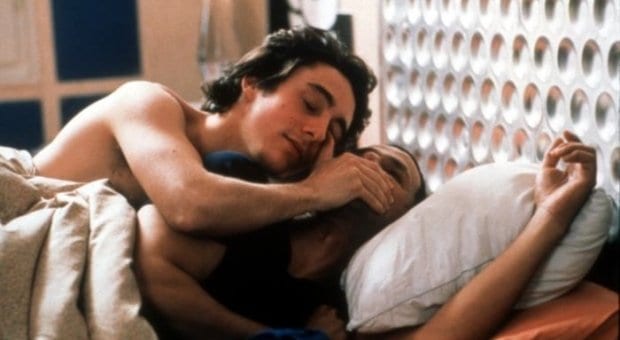By email, by video blog, in person, in front of a studio audience or with a cake, coming out is a significant experience in a queer person’s life.
That’s why coming-out narratives have played such a big role in queer art. But while in our culture coming out of the closet is seen as a necessary act synonymous with self-love, self-acceptance and community pride, that isn’t the case in other countries and cultures, says Florian Grandena, a University of Ottawa professor and an expert in queer cinema and pop culture.
“The coming-out narrative is very interesting because it’s typically North American,” Grandena says. “[It’s] based on the closet metaphor, which is not universal. In France, we don’t use the closet metaphor that much. We make a distinction between the private and the public spheres, but the closet metaphor is not what comes naturally to people’s minds when we talk about homosexuality.”
With English-speaking films playing such a dominant role in queer film and queer studies, Grandena decided to organize a cycle of conferences to explore queer cinema and queer art from non-English-speaking countries.
The first Hypervisibility: Beyond the Closet conference took place in Montreal seven years ago. The second conference was held in Scotland in 2008, and the third installation will take place at the University of Ottawa on Dec 7 and Dec 8.
Speakers from Canada, the United States, France, Italy, Hungary, Egypt, Lebanon and Austria will discuss coming-out narratives in film, music, fashion, graphic novels and contemporary art.
Born and raised in France, Grandena says that the way a culture views being queer is reflected in its art. In countries where homosexuality is illegal, LGBT themes are often depicted by metaphor — recognizable to gay audiences but not to censors, he says.
In France, since coming out isn’t seen as a necessary, defining moment of a queer person’s life, queer films often don’t portray the coming-out experience, Grandena says.
In the 1983 French film L’Homme blessé, a young man struggles to express his same-sex desires. Although it’s a flawed film, the depiction of gay desire is important, especially for the time, Grandena says.
“You have that young man dying to kiss another man, dying to have sex with another man,” he says. “For once in French cinema, gay desire was possible; it was represented.”
Although the protagonist wants to break away from his isolated life and experience sexual fulfillment with another man, the film doesn’t have a coming-out narrative like Ang Lee’s Brokeback Mountain.
“The closet metaphor is essential in [Brokeback Mountain], and the two characters, especially Ennis Del Mar, experience a lot of shame and self-hatred because of their same-sex desires,” Grandena says. “The coming-out narrative is not quite there in [L’Homme blessé] because maybe the character doesn’t need to come out. Coming out relies on the assumption that someone needs to tell someone else about their sexual orientation, but in many French films, that need is not there — sometimes because homosexuality is taken for granted and sometimes because people just experience private feelings that they don’t need to share with the entire world.”
There are exceptions, of course, but Grandena says the prevailing, abstract view of being French in France is about being part of a single, national culture. Being queer, being a person of colour, being a feminist: these identities are private and secondary to being French, he says.
However, this view of LGBT identity as secondary and private can be damaging in relation to queer rights, he says.
“You cannot fight for your rights if you don’t kind of declare your sexual orientation to the rest of the world,” he says. “You can’t have identity politics if you don’t have that declaration about your own sexual orientation.”
French nationalism also plays a role in the country’s gay porn, he says.
“There seems to be some kind of fascination in French gay porn — and I’m talking about male gay porn here — for the Arab body,” Grandena says. “There seems to be some kind of post-Colonial nostalgia for the young, male Arab body.”
These porn films often take place in Parisian suburbs, covering off ethnic and class preoccupations in one film, he says.
Another factor in queer film is the presence of the straight filmmaker. Blue Is the Warmest Colour, while a well-acted film, was made by a straight man for straight audiences, Grandena says.
“I find the very graphic sex scenes quite insulting to lesbians,” he says. “I went to see the film at Bytowne Cinema in downtown [Ottawa], and I’m telling you, all the lesbians were laughing like nobody’s business.”
As a scholar and a queer man, Grandena says that despite their limitations, coming-out narratives remain important for straight and queer audiences alike because LGBT representations in art decrease isolation and promote understanding.
Hypervisibility III — Beyond the Closet: Coming-Out Narratives in Transnational Visual Cultures
Sat, Dec 7 & Sun, Dec 8
University of Ottawa
For more information, email florian.grandena@uottawa.ca


 Why you can trust Xtra
Why you can trust Xtra


